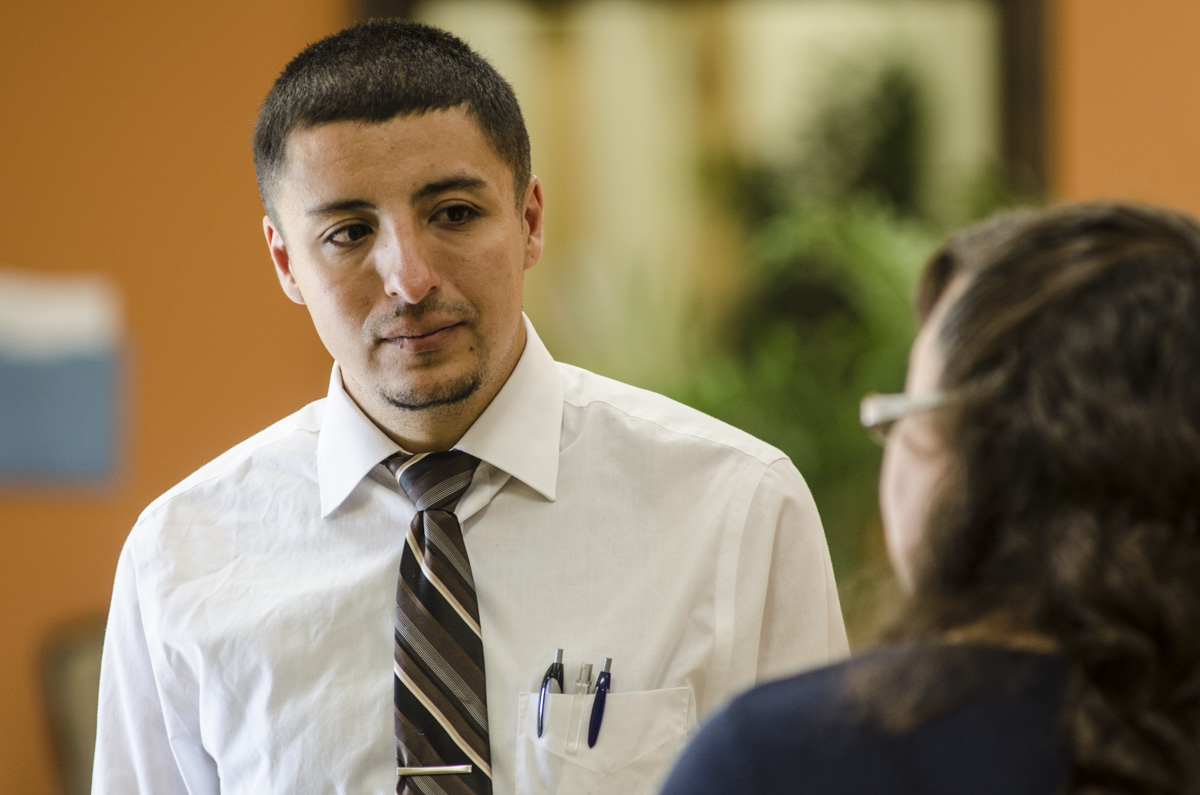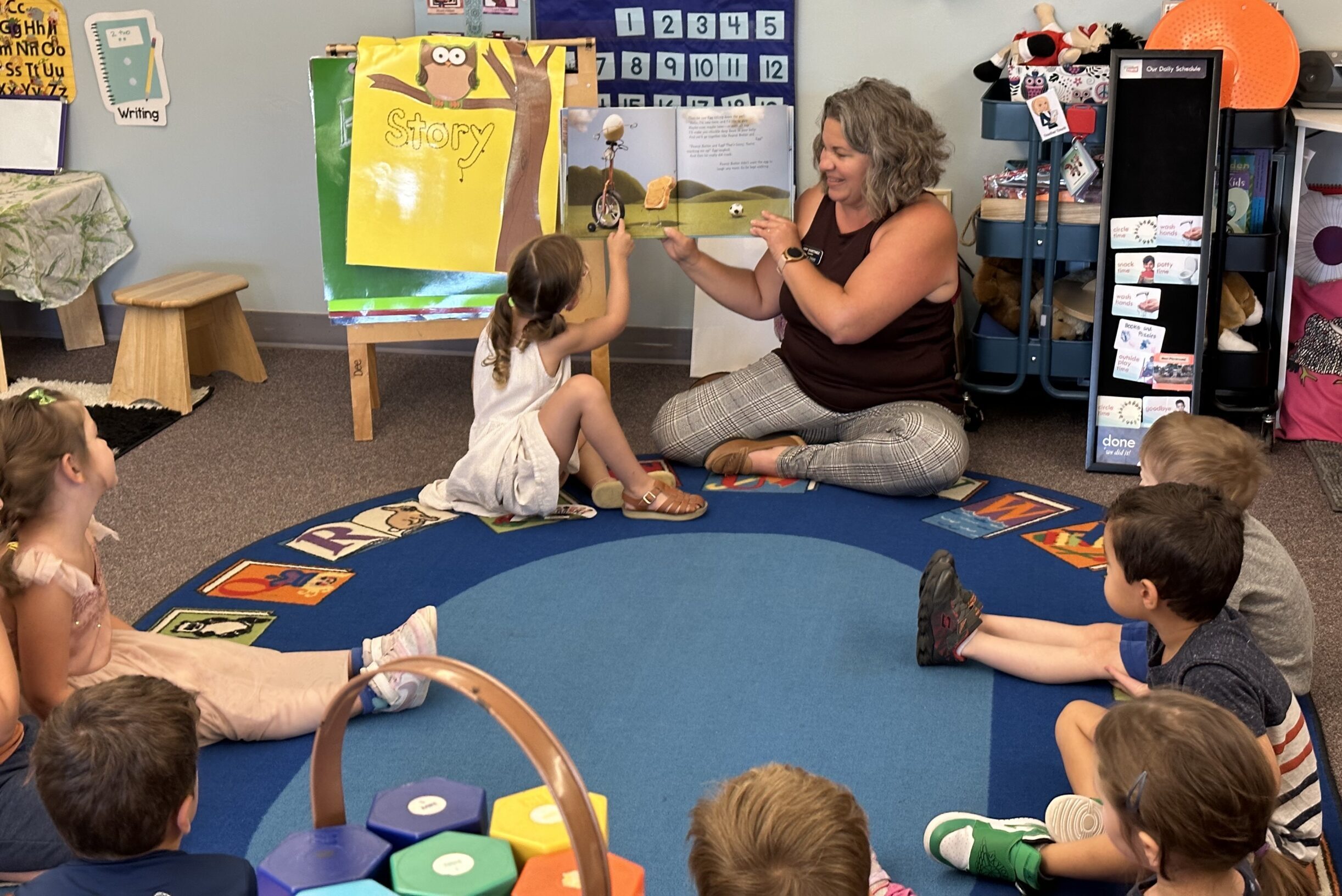
Devin Mestas, a high school senior from San Luis, Colorado, is ready to move on. She grew up in San Luis, just a few miles from the New Mexico border in south-central Colorado.
Mestas wants to be a probation officer and plans to attend college in Trinidad, about a 50 miles east on the other side of the Sangre de Cristo mountains. Other people, she says, feel a need to stick around for their families. But not her.
"I love my parents. They are always going to be there for me. But they've told me to do what I want to do," Mestas said. "Honestly, there's nothing here in the valley for me to stay for."
If Mestas follows through with her plan and doesn't come home, she won't be alone. The San Luis Valley loses many of its young adults to the Front Range and beyond every year. Residents and economic development officials say a lack of opportunities is behind much of the ongoing exodus from the valley that looks more like old Mexico than Colorado in some areas. Other than agriculture, government and health care jobs, there's not a lot of work.
Some of those who leave eventually feel the pull of their family ties, which run deep in the valley. When they return though, they're armed with college degrees and a desire to improve their hometowns. One of the area's native sons is Mestas' own principal, Curtis Garcia.
From Alamosa to Yale
Garcia grew up in Alamosa, the son of a bank teller and a city worker. He graduated near the top of his class and left for Yale where he earned a B.A. in political science. It wasn't easy at first.
"I was confronted with people who were a lot more prepared than me, who had access to a lot more opportunities than I did," Garcia said. As he adapted to collegiate classes that emphasized critical thinking -- a freshman course on race, class on gender was a turning point, he says -- he began imagining life on the East Coast after college. But that changed.
"Ironically, as I started to learn a lot more, I started to get in touch with myself a lot more and get in touch with my own roots, which really helped me understand that the valley was home for me," he said.
- In The San Luis Valley, Grandparents Fill Absent Parents' Void
- More Coverage: Childhood Poverty In Colorado
He returned to the valley in 2008 and began teaching at the K-12 school in San Luis. Now, seven years later, as principal, he's trying to implement more modern teaching methods. The valley's isolation means it was the last place in the state to jump on education trends, he said. His teachers now attend state and national conferences to meet with peers and develop their skills in new ways.
The students in his district, and across the valley, are consistently some of the most high-need in the state. The Colorado Children's Campaign considers three valley counties -- Alamosa, Costilla and Saguache -- to be "persistently poor." 
"Poverty that persists through generations presents unique challenges for a community, not only because of the decades of economic hardship but also due to the fact that persistently poor counties are often geographically isolated from other resources," the Children's Campaign's 2015 Kids Count report says. Along with the ever-present poverty, Garcia said he sees a big spike in drug and alcohol use, as well as risky sexual behavior, among his students.
One of Garcia's teachers, Gilbert Apodaca, sees signs of poverty in his classroom every day. Apodaca grew up in government projects in San Luis and he was the first member of his immediate family to attend college -- Colorado State University in Fort Collins. His plan was to become an engineer and "make a lot of money," but he ended up moving home when relatives were getting older and needed help.
His upbringing helps him connect with his students, he said.
"It's almost like being forged by the fire. It's tough. And if you come out of here, you're going to kind of go one of two ways," Apodaca said. "You're going to go [down] a tough path and that makes it difficult to support yourself and your family your whole life. Or you're going to learn to work hard and learn what it means to struggle and overcome that and you're going to become something awesome."
Garcia said he often encourages students to leave the valley when they have the chance, even when they are hesitant.
"It's OK to go for a little while, learn a thing or two, and you're free to make the choice to come back," he said.
Garcia's days in San Luis are numbered though; he's taken a teacher education position at Adams State University in Alamosa.
How to get natives to stay, or at least come back
The key to getting young adults to stay in the valley -- or come back -- is simple, economic development officials say: jobs. Alamosa, the valley's commercial and educational hub, is growing, but surrounding communities are shrinking.
"The trend is most people don't come back," said Ben Waddell, a professor of sociology at Adams State University.
Adams State acts as a magnet for young adults; data from the Colorado State Demography office shows an influx of college-age people into Alamosa County while more rural counties see outward migration. After graduation age though, there's a big exodus in Alamosa County before the migration rate swings positive again by middle age.
The valley's economy has long lagged behind the rest of the state, Waddell says, partially because of its isolation from the economic engine that is the Front Range. Denver is about four hours away with at least one mountain pass in between, depending on the route.
Waddell said the valley, in more prosperous times in the mid- to late-19th century, was built around small ranching and farming communities. Since then, farms became bigger -- both in the valley and across the U.S. -- and the country's economy shifted to its cities.
"It takes more land to make a living than it used to," said Mike Wisdom, executive director of the San Luis Valley Development Resources Group in Alamosa. That makes it harder to get started in the ag business, he said. 
That steep barrier to entry has hollowed out small valley towns like Manassa and San Luis , Waddell said.
"Really, who’s left are young children and a lot of grandparents," Waddell said. "There isn’t a whole lot of in between. Working-age people are somewhere else -- anywhere there’s employment."
Still, agriculture is the backbone of the local economy, providing 31 percent of the base income in the valley. Wisdom says health care and government are the other main economic drivers, and he expects those to grow.
Coming home to a struggle

Melissa Martinez grew up in the valley surrounded by extended family, but left as a young adult to live in Denver. She was helping serve dinner at a homeless shelter in Alamosa earlier this month with her five children. While the single mom isn't staying there, she said the shelter has been a big help to her since she moved back to the valley.
She moved home to help care for her ailing grandmother. But her decision to do so was a painful one: she was in Denver when her grandfather died.
"It hurt, because I couldn't pay my respects," she said. "Now, I'm here and I'm going to stay here until my grandma ... you know. I don't want that same mistake to happen again."
She says she'll soon start the nursing program at Adams State, and is determined to stay in the valley. It's hard, Martinez admits. But just as she moved home to help her grandmother, she now has other relatives nearby to return the favor.








